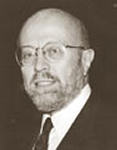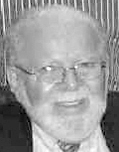|
Office Control Crumbles
With the advent of the UCSJ, the dynamics of the Soviet Jewry
movement altered dramatically. Across North America new grass root
groups emerged. From the 6 member councils, the UCSJ grew rapidly:
by 1971 to 10; 1972 to 16 (including two Canadian councils); 1973 to
18; and by 1985 topped out at 32. Two grass roots organizations
the Student Struggle for Soviet Jewry (New York City) and the
Minnesota Action Committee for Soviet Jews opted not to affiliate
formally with the UCSJ. Nevertheless, throughout the 1970s and
1980s, they worked with us hand-in-hand on crucial national
undertakings. As mentioned earlier, we established productive
relationships with independent activists in Israel. But central to
all of our work were the close, regular communications established
from 1971 on with Jewish activists in the USSR. (That story will
appear in future editions of this chronicle).
In 1970, when the UCSJ entered the scene, the
American Jewish Conference on Soviet
Jewry (AJCSJ) had been on stage for six years. Starved from the
cradle absent a budget it was a feeble, fitful advocate for
Soviet Jewry. With the arrival of the UCSJ, the Jewish establishment
and the Office saw trouble ahead. The result was the National
Conference on Soviet Jewry (NCSJ). Two insiders, Al Chernin of the
AJCSJ, and Jerry Goodman, NCSJs first executive director, give
their take on events in Memoranda of Meetings with Al Chernin and
Jerry Goodman, November 28, 1977:
|
Jerry Goodman: In
1970, because of the activity of the Jews in the Soviet
Union, the growth of JDL (Jewish
Defense League), the growth of the militant
activists and the activity of Lou Rosenblum and the
Union of Councils, there was pressure to reorganize the
American Conference. The real pressure came from 'our
friends' who were afraid of JDL and the Union of
Councils speaking for the Jewish community.
[T]he old
AJCSJ was restructured, and final approval was given to
the organization of the NCSJ, which was to be an
organization without a community arm.
Al Chernin, regarding NCSJ policy: 'our friends' and
the NCSJ chairman play a major role in determining the
line and direction. |
To view Memoranda,
click here.
 |
|
 |
| Jerry Goodman |
|
Al Chernin |
Overall, 'our friends' Levanon & Co. got half a loaf. The NCSJ
started up in June 1971, funded by the Council of Jewish Federations
and Welfare Funds (CJFWF). Based in Washington the NCSJ was limited
to political liaison with the Administration and Congress and
issuing press releases. It was not allowed to contact or supply
information to communities. That function was reserved for the AJCSJ
hamstrung, without funding.
In contrast, the UCSJ used the talents and resources of local
councils to engage tens of thousands of people countrywide in a
variety of collective activities, for instance:
greeting cards, telephone calls,
packages, and financial aid to Soviet Jews,
boycott of Pepsi-Cola and initiation and
support of Congressional legislation linking trade benefits for the
USSR to freedom of emigration (see below).
next > The
Why and Wherefore and the Woe |

